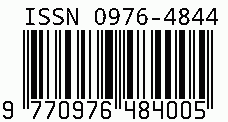
Journal of Advances in Developmental Research
E-ISSN: 0976-4844
•
Impact Factor: 9.71
A Widely Indexed Open Access Peer Reviewed Multidisciplinary Bi-monthly Scholarly International Journal
Plagiarism is checked by the leading plagiarism checker
Call for Paper
Volume 17 Issue 1
2026
Indexing Partners



















Embedding Change Management in Regulatory Compliance: A People-Centered Approach to Navigating Regulatory Shifts in Complex Enterprises
| Author(s) | Abhishek Sharma |
|---|---|
| Country | United States |
| Abstract | Amid a global economy increasingly subject to regulation, organisations need to keep up with a fast-moving pace of change in compliance requirements. Industry regulators, such as those for finance, healthcare, education, and technology, are increasingly releasing new and stricter mandates with short deadlines for compliance. Historical models of compliance-oriented management have primarily focused upon questions of structural and procedural compliance that centre upon a legalistic/technical perspective of the regulatory environment. However, these efforts frequently overlook an important dimension: the individuals tasked with carrying out the regulatory reforms. Compliance work is likely to be inefficient and met with resistance and unsustainable change if members of the workforce are not educated and activated. This paper presents a human-centric approach to regulatory change management, integrating organizational change management (OCM) into regulatory compliance efforts. It utilizes the Prosci method, including the ADKAR Model, the Prosci 3-Phase Process, and the Prosci Change Triangle (PCT) Model. As described by Prosci, it is a methodical process used to react to regulatory changes by monitoring, examining, and activating changes in policies, systems, and behaviour within an organization. However, the paper suggests that successful RCM goes beyond simply reacting to policy and procedure updates. Instead, what is required is a deliberate change management plan based on human-centered design and stakeholder buy-in. The ADKAR framework, which focuses on the personal transition of individuals through five stages: Awareness, Desire, Knowledge, Ability, and Reinforcement, is a key foundation model for engaging employees to accept and sustain regulatory changes. By approaching change with an understanding of the technology and people side, companies can embed compliance into culture, eliminate pushback, and increase adoption. This research synthesizes real-world examples and empirical evidence collected from highly regulated institutions that have a history of structured change management. For example, SURA, a Latin American financial institution, accelerated digital compliance, requiring six months less than the competition by adopting the methods of Prosci. Microsoft’s Investor Relations team leveraged a 50-step change plan to influence complex earnings release procedures with pinpoint accuracy. At the same time, Velera trained in-house change practitioners to create sustainable compliance skill sets across teams. The onus is on such examples not only to show that structured change management can lower compliance risk, but also that it improves business agility, operational efficiency, and employee morale. In this paper, we also uncover the top challenges faced by organisations when dealing with regulatory change, including: the speed of legislative change, cross-functional complexity, and employee confusion. In the absence of centralized visibility, clear communication, and leadership involvement, organizations end up lagging in their response, which puts them at even more legal, financial, and reputational risk. In this paper, the approach described addresses these challenges by prescribing a multi-layered governance model that integrates compliance management with enterprise-wide change enablement, risk assessments, and leadership-led communications. The results reveal that organizations that have developed sophisticated change management capabilities are much less likely to miss their regulatory targets. The findings reported would encourage embedding change management maturity assessments, such as the Prosci Change Management Maturity Model, in the design and enactment of enforcement programs to prepare and react appropriately. The long-term implications to the organization of treating regulatory compliance as a business change project and not simply a legal requirement are explored in the discussion section. This paper argues for the incorporation of change management into the compliance lifecycle itself, rather than as the mere underpinning and support. Organizations can move beyond a reactive compliance approach to one that is sustainable, proactive, and resilient by aligning compliance strategies with the people it is meant to influence. Regulatory Change will still be a fact of life, but resistance, if not confusion and chaos, does not have to be. By focusing on a disciplined, people-first journey driven by proven change management methodologies, intermediate institutions can succeed within the current regulatory uncertainty and challenges. |
| Keywords | Regulatory Change Management, Organizational Change Management, Prosci ADKAR Model, Compliance Transformation, People-Centered Change, Enterprise Risk Management, Complex Systems, Regulatory Adaptation, Change Readiness, Compliance Governance. |
| Field | Engineering |
| Published In | Volume 16, Issue 2, July-December 2025 |
| Published On | 2025-08-11 |
| Cite This | Embedding Change Management in Regulatory Compliance: A People-Centered Approach to Navigating Regulatory Shifts in Complex Enterprises - Abhishek Sharma - IJAIDR Volume 16, Issue 2, July-December 2025. DOI 10.71097/IJAIDR.v16.i2.1514 |
| DOI | https://doi.org/10.71097/IJAIDR.v16.i2.1514 |
| Short DOI | https://doi.org/g9wpwd |
Share this


CrossRef DOI is assigned to each research paper published in our journal.
IJAIDR DOI prefix is
10.71097/IJAIDR
Downloads
All research papers published on this website are licensed under Creative Commons Attribution-ShareAlike 4.0 International License, and all rights belong to their respective authors/researchers.

